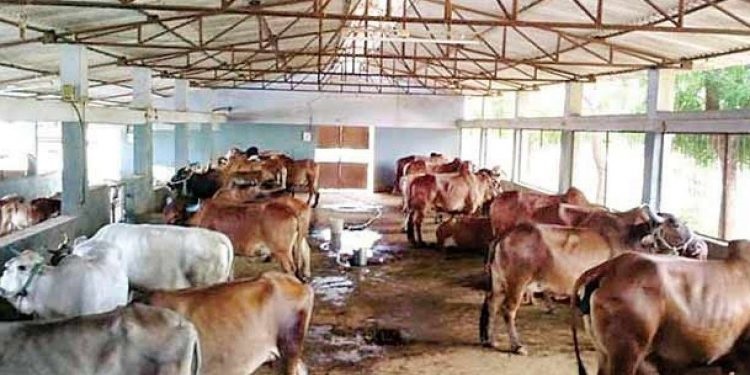Kendrapara: Soaring prices of fodder and lack of government initiatives to address the issue have hit cattle farmers hard in the district, and the state at large. According to reports, the state government had recently increased the price of OMFED milk by Rs 4 per litre. Following this, the prices of other brands of milk produced by private firms also witnessed a rise. However, the state government, as well as the district administration, seems to be a little perturbed by the rising prices. Interestingly, cattle farmers have failed to reap the benefits of the price rise. This is due to the sharp rise in the prices of fodder.
As a result, these farmers, who are members of the milk producers’ cooperative societies, end up spending more on fodder than getting any profits out of the sale of milk to the societies. Sources said the farmers are paying a premium these days to buy packets of cattle feed from traders which is no match to the profit they earn from selling milk. This has left them impoverished and rendered the livestock vulnerable to nutrition deficiency.
Despite the farmers’ demand for a reduction in the prices of fodder for a long, it has remained unchanged, sources added. The farmers alleged that the state government is to be blamed for not implementing the plans to manufacture cattle and poultry feed locally. Because of that, fodder and poultry feed-producing firms from outside the state are cashing in on the situation. Similarly, the promotion of green grass cultivation by the Horticulture department has remained only on paper and yet to take off. Cattle farmer Krutibash Das of Gobindapur village under Derabish block said that the frequent increase in prices of fodder has become an impediment to cattle farming. He said it has been observed that a rise in prices of milk always triggers a sudden hike in the price of fodder.
However, the kind of hike in fodder price at present was beyond their anticipation. “Usually, the price of fodder goes up by Rs 2 per kg following an increase in milk prices. But this time it has been Rs 5-6 per kg,” he said. At present, a 50-kg fodder bag costs around Rs 1,280, while a 50 kg packet of husk costs around Rs 1,150. “This inflationary rise is burning holes in the pockets of milk farmers as it has surpassed the profit they got following the rise in milk prices,” he said, adding that the benefits are rather going straight to the pockets of the traders. Farmer leader Gayadhar Dhal said that the state-owned OMFED used to supply cattle feed to farmers in the past and the management of price was under the control of the state government.
However, the fodder manufacturing centre closed down 10 years ago due to mismanagement. “Since then, traders from outside the state are calling the shots for fixation of cattle feed prices, and are responsible for the price hike. At the same time, there is a huge difference in quality between the OMFED fodder and those manufactured outside the state which we are buying at present,” he said. The cattle feed from outside of the state is of inferior to very low quality as compared to the OMFED fodder, Dhal added. Meanwhile, a social activist from Kendrapara, Manmath Kumar Rout said that the state boasts of a conducive atmosphere for manufacturing cattle feed as Odisha is primarily an agriculture-intensive state. “Maize, groundnut wastes and husks are available in plenty here which are required for manufacturing cattle feed.
Moreover, members of women’s self-help groups under Mission Shakti can be engaged in the preparation of cattle, poultry and fish feeds,” he said. Rout said the state government can establish at least one factory in every district under ORMAS and make the best use of the resources for manufacturing of cattle, poultry and fish feeds. “If the state government comes up with a concrete plan in this direction, we would have plenty of cattle feed available for farmers at a reasonable price and the high-handedness of outside traders will come to an end,” Rout added. Another social activist, Nihar Ranjan Pradhan, from Chhoti in Kendrapara said green grass is best for use as cattle feed and rural areas in the state have favourable atmosphere for its cultivation due to the easy availability of labour and human resources. “The state government should draw a special plan to encourage rural youths to take up green grass cultivation. Poverty alleviation schemes like MGNREGA can be also utilised to promote the plan. This will ensure livelihood for the youth, while livestock farming will get a boost,” Pradhan added
